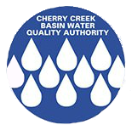Summary of Recommended PRFs
2024-2033 Budget Projects ($1000s)
How We Spend Our Funds
The 2024 budget includes over $3.7 million in new revenues and CCBWQA is mandated to spend at least 60% of the annual revenues on Pollution Abatement Projects. As expenditures and revenues are often not matched each calendar year (because implementation and timing of project costs can vary significantly from year to year) the CCBWQA Board tracks the 60% funding requirement as a multi-year mandate, as opposed to a single-year requirement. This interpretation allows CCBWQA to fund larger projects – a crucial element to CCBWQA’s success. The Board has determined that "Pollution Abatement Projects" include:
- Any physical structure or facility that is planned, designed, and intended to directly reduce nutrients or other pollution in the Cherry Creek Reservoir or the Cherry Creek Watershed (colloquially referred to as a Pollution Reduction Facility or PRF);
- The acquisition and/or interest in a property, including easements for the purpose of controlling or reducing nutrient loading or pollution in the Watershed; and
- The development of any new approach, analytical tool, educational approach, or other innovative methods for treating or controlling nutrient loading or pollution in the Watershed.
In 2023, CCBWQA spent 65% of its annual revenues (over $2.6 million) on Pollutant Abatement Projects. The 2023 budget plans on spending a minimum of 60% of current year revenues on Pollution Abatement Projects. The Board’s goal is to meet the 60% mandate over a five-year rolling average. As the summary of recommended PRFs shows, $24 million is planned on structures and facilities over the next ten years.
The remaining 40% of revenue is allocated towards monitoring, modeling, special studies, planning documents, technical reports or memoranda, and administrative costs.
More information on the CIP program can be found here.
